In Hokusai pt1. I wrote about his life, paintings, drawings and many other non-print creations. Today’s post is a chronological overview of his prints, with brief write ups on my thoughts about them. Titles and dates are entered as accurately as I could find, though there seem to be more than there should from 1830!
Adrian 20.April.2016
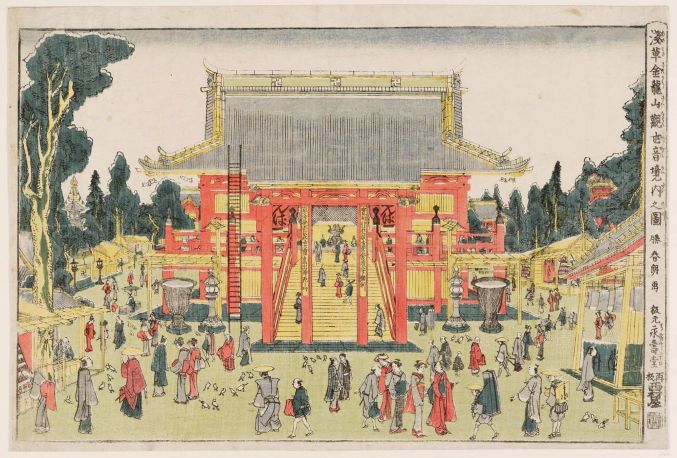
Katsushika HOKUSAI: Asakusa Shrine, Edo (c. 1780)
Hokusai would have been 20 years old when he designed this ambitious composition, which captures all the activity around the Shrine in central Edo. The print is produced using only a couple of colours, this decision would have likely been made by the publisher, and it is unlikely that they would entrust the inexperienced Hokusai with a more expensive design: the more colours, the more materials and man hours, resulting in a more expensive the product.

Katsushika HOKUSAI: Ichikawa Ebizō as the Saint Monkaku Disguised as a Bandit. 1791
In his early 30s and by this point Hokusai had been apprenticing for 10 years, he was still a very junior print designer. This print is of Kabuki actor Ichikawa Ebizo playing the character of Saint Monkaku disguised as a Bandit. While on first look this print is produced pretty roughly, but there is a lot of characterisation going on in the design: in a lot of later prints I find that the people Hokusai depicts are often taking part in an activity and with that he manages to draw me into their narrative.
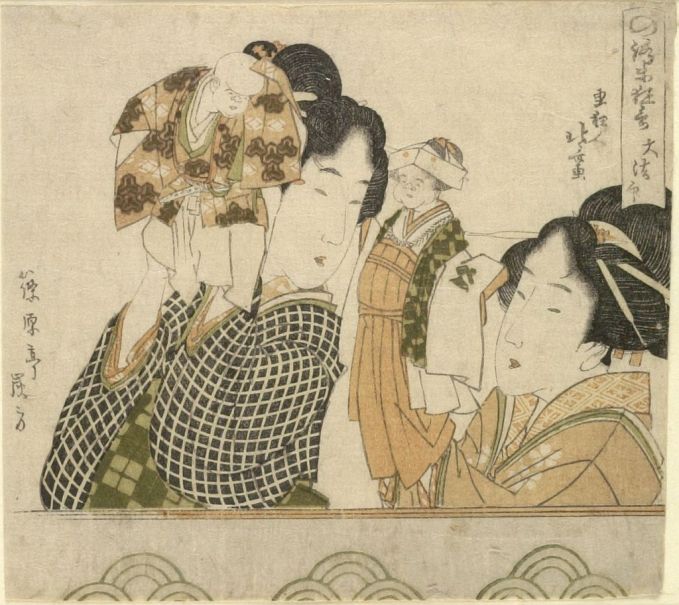
Katsushika HOKUSAI: Two Women Playing Hand Puppets of Noroma and Soroma/ Noroma Kyôgen, The Great Buddhist Clergy. 1800
Produced 9 years after the previous print and in some ways it seems like a step backwards, the women are very generic, but the puppets them foreshadow his stylized way of depicting people.
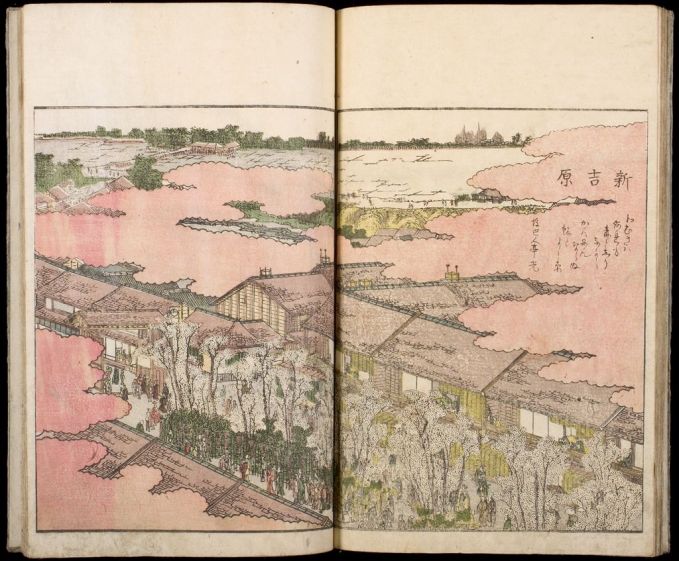
Katsushika HOKUSAI: Amusements of the Eastern Capital. 1800–1802
This was designed by Hokusai in his early 40s, and while it is beautiful, this book illustration doesn’t fit with my thoughts of Hokusai’s style: the pink and green pallet isn’t reflective of his later works, and people are entirely missing from this print. The majority of Hokusai’s most well-known works were produced after he turned 60.

Katsushika HOKUSAI: Mitsui Shop. from the series Thirty-Six Views of Mt. Fuji . 1830-32
Now into his 70s, this for me is the first print displayed here that captures many of the main characteristics of Hokusai. He works Mt. Fuji, a full colour pallet, featuring lots of blues, and a Bokashi- colour fade. As previously mentioned, Hokusai’s people are involved in activities, which I find very engaging.
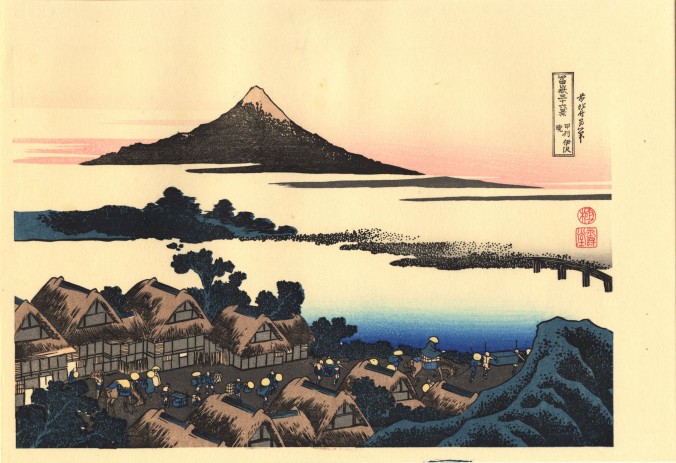
Katsushika HOKUSAI: Dawn at Izawa in Kai Province, from the series Thirty-six Views of Mt. Fuji. 1830
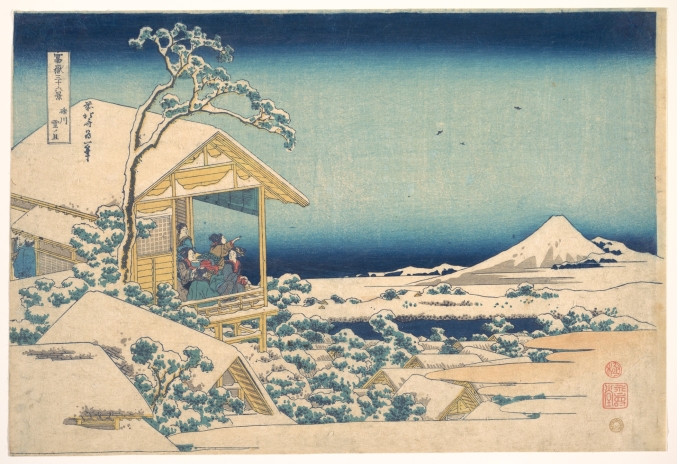
Katsushika HOKUSAI: Tea House at Koishikawa. The Morning After a Snowfall. 1830

Katsushika HOKUSAI: The Mansion of the Plates (Sara yashiki). from the series One Hundred Ghost Stories (Hyaku monogatari). 1830
I have only found a few prints from this wonderful looking series on Yokai (above), I look forward to finding more! For more info on the facinating world of Yokai please take a look at last month’s post.
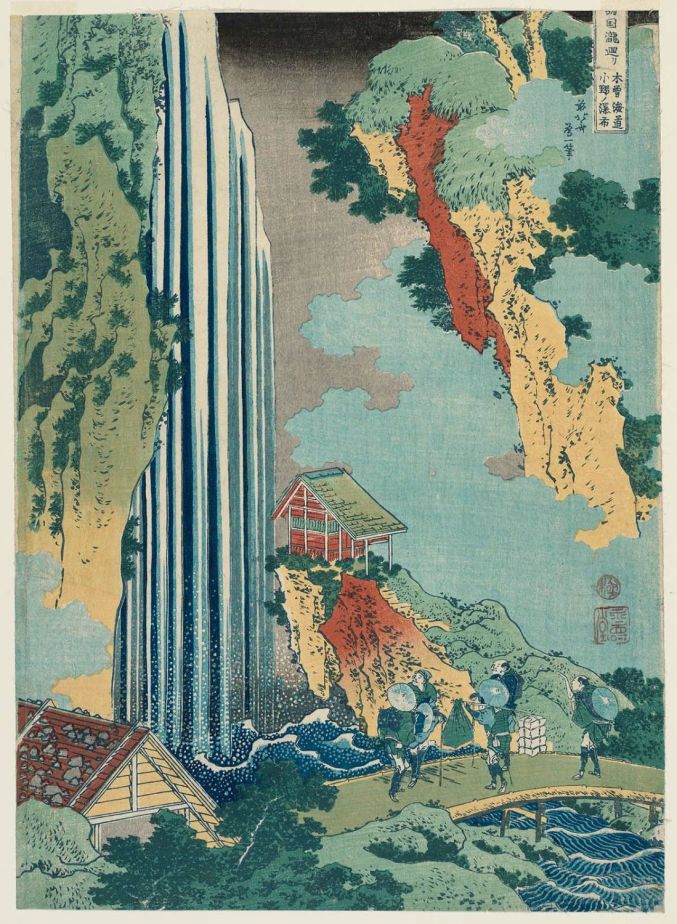
Katsushika HOKUSAI: The Waterfall at Ono on the Kisokaidô Road (Kisokaidô Ono no bakufu), from the series A Tour of Waterfalls in Various Provinces (Shokoku taki meguri). 1830

Katsushika HOKUSAI: A Tour of The Waterfalls of The Provinces (series). 1830
These two waterfall prints are from my least favorite series of Hokusai’s latter career: Unlike most of Hokusai’s other landscapes, these seem more imagined than real, I also don’t like the colour pallet that was chosen. I should add that my appreciation of these prints might be hampered by the format: long, narrow, portrait orientation viewed on a landscape view screen.

Katsushika HOKUSAI: Sesshuu Tenmabashi. From the series Unusual Views of Celebrated Bridges in the Provinces. 1830

Katsushika HOKUSAI: Ashikaga Gyoudousan Kumo No Kakehashi. Unusual Views of Celebrated Bridges in the Provinces. 1830
Contrasting these two prints of bridges to the ones on waterfalls, I find these latter images more striking and dynamic they almost seem like scenes from a movie.
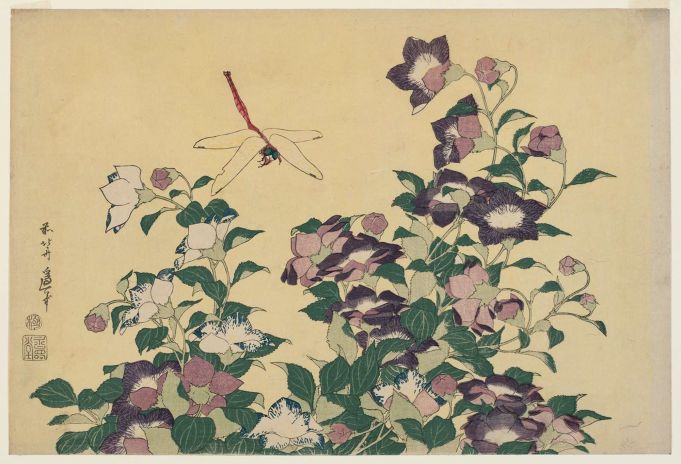
Katsushika HOKUSAI: from the series on Large Flowers . 1830
This reminds me of still life paintings from Europe, eventhough Japan at this time was still cut off from the rest of the world.
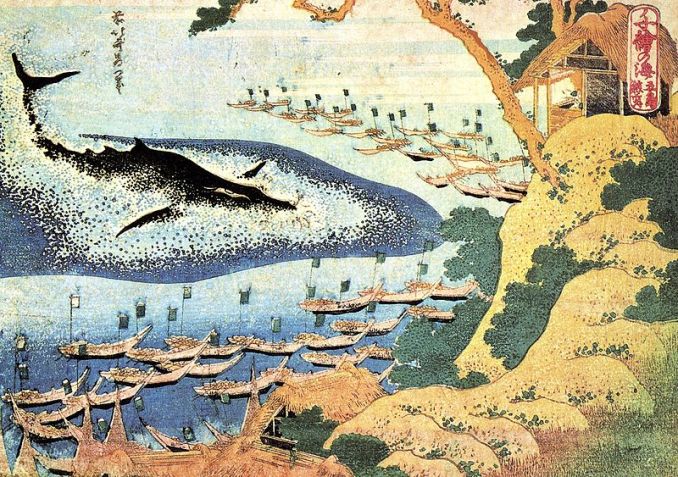
Katsushika HOKUSAI: Whaling Off Goto. from Oceans of Wisdom. 1834
Yet another series that I was unaware of prior to researching this post, Hokusai in his mid- 70s returned to the theme of the sea I think it’s enchanting. (even if the subject matter is a bit grim)
One Comment Add yours